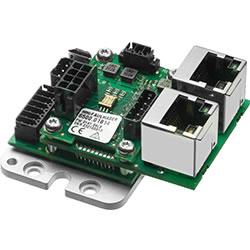3D Printing Revolution: How Localized Manufacturing Is Reshaping Global Trade
.jpg)
In an era of trade tensions and supply chain disruptions, transformative technologies are quietly reshaping how companies think about production, distribution, and geopolitical risk. In the realm of advanced manufacturing, robotic large-format additive manufacturing (LFAM) is rapidly emerging as a strategic tool for businesses seeking to bypass traditional trade constraints and build more resilient operations. In this feature, Francesco De Stefano, CEO of Caracol AM, discusses how LFAM reduces reliance on global supply chains, cut emissions, and support on-demand manufacturing.
A “glocal” manufacturing network to meet the industrial needs of the future
Shifting production closer to parts’ end use location means enabling faster lead times, greater agility, and lowering overall environmental impact. With manufacturers increasingly being able to support their local needs, LFAM ensures a more sustainable way to meet actual demand for certain products, and the strategy is already yielding results across sectors.
For example, Dutch automotive company Van Venrooy manufactures custom vans for specialized uses like mobile dental units. By implementing robotic large-format additive manufacturing technology, they've shifted production on-site, eliminating reliance on Far East suppliers and the associated costs and risks of extended supply chains.
This trend toward localization isn't isolated. Companies across the United States, including Hitt in Virginia, Vitruvian in Georgia, AES in Ohio, and Dive in New Jersey, are leveraging locally produced additive manufacturing technologies to transform their operations. Recognizing this shift, technology providers like ourselves have established U.S. manufacturing operations where they produce and service their systems domestically, ensuring local supply chain, support, and compliance with regional standards.
Changing the Consumerism Paradigm: From Mass Production to On-Demand
3D printing is a technology that thrives in sectors requiring customization, small-to-medium batch sizes, or on-demand production. Aerospace, defense, construction, and industrial design are leading the adoption curve, embracing additive manufacturing as a smarter alternative when traditional tooling and logistics introduce inefficiencies. While for some larger production volumes it has become a valid solution, it is hard to imagine it will ever replace very low cost, consolidated high-volume traditional manufacturing technologies like injection molding.
The tangible benefits that large format additive manufacturing delivers on bigger applications, generally defined beyond 1 meter or 3 feet in size, is driving exponential growth in the adoption of LFAM for localized, agile production. This technology enables companies to reduce waste, improve responsiveness in lead times, be more efficient in production and logistics costs, and ultimately decouple their operations from the constraints of global supply chains.
Industry experts project even broader integration of these technologies in manufacturers’ operations within the next 5-10 years, particularly as sustainability concerns and regulations become globally more relevant and companies seek production methods that offer speed, flexibility, and reduced impact.
Digital Design: The New Trade Currency
Perhaps the most revolutionary is how digital files are reshaping traditional notions of inventory and trade. Instead of warehousing physical parts, companies can maintain "digital inventories" – design and path planning files ready to be printed locally on demand.
This shift effectively transforms products from tangible goods into data, which some might deem a risk as they could potentially bypass traditional trade routes, tariffs, and geopolitical friction. A part designed in Europe can be instantaneously sent as a file to North America and produced locally within hours – no customs delays, no shipping costs, no carbon footprint from transportation.
Digital part files are not just a workaround but the foundation of a smarter, more decentralized manufacturing future. However, this digital transformation introduces new challenges around intellectual property protection and regulatory frameworks.
The Regulatory Frontier
Current trade policies and legal structures remain largely rooted in the movement of physical goods, struggling to adapt to a world where products move as data rather than materials. Industries are exploring technologies like NFTs and blockchain-based systems to help track, authenticate, and protect digital manufacturing files – ensuring each design is uniquely identified, securely shared, and traceable.
Regulators are beginning to acknowledge these "digital loopholes" in traditional trade frameworks, but there's no clear international consensus yet on how to classify and regulate design files. The question remains: Are they tradeable goods, services, or something entirely new?
The Sustainable Imperative
Beyond bypassing trade restrictions, additive manufacturing aligns naturally with circular economy principles by minimizing waste, enabling repair and reuse, and allowing for local, on-demand production.
As regulations tighten and pressure to decarbonize grows, additive manufacturing stands to become a strategic tool – not just for navigating trade shifts, but for building the next generation of clean, smart, and flexible supply chains.
Looking Forward
The decentralized manufacturing model strengthens production independence while introducing new approaches to managing intellectual property and trade. Companies that embrace this shift gain not only operational resilience but potentially significant competitive advantages in cost, speed, and sustainability.
This isn't just about printing parts – it's about reimagining how and where value is created in a global economy increasingly defined by data, and a lot less by geographical distance.
For forward-thinking manufacturers, the message is clear: the future of production won't be defined by where factories are located, but by how effectively companies can transmit, protect, and materialize designs anywhere in the world.
Comments (0)
This post does not have any comments. Be the first to leave a comment below.
Featured Product

